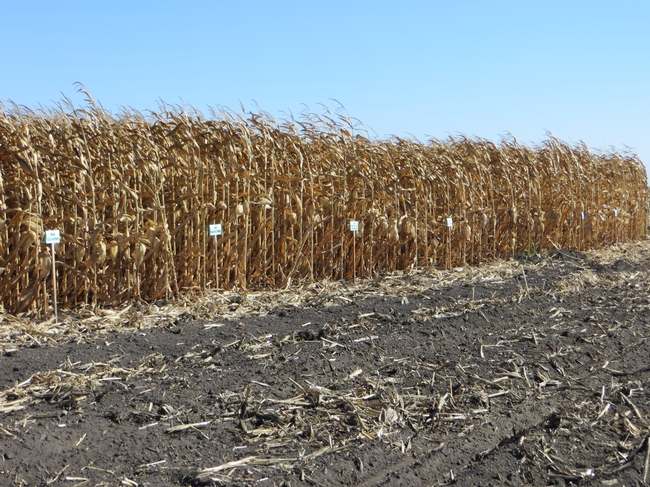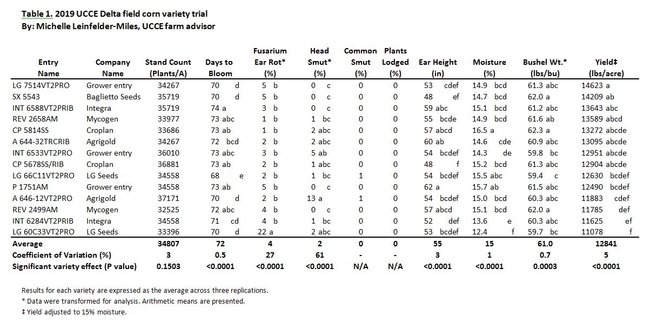
Stand counts were made approximately two weeks after planting. The stand was assessed in the center two rows of each four-row plot, counting the plants along a 10-foot length. Bloom was assessed over the week of July 15th. We monitored disease incidence and plant lodging in late September. Disease incidence, particularly Fusarium ear rot, was lower in 2019 compared to 2018. A sign of Fusarium ear rot is white fungal mycelium around the kernels. The disease is usually introduced to the ears by corn earworm or by thrips that travel down the corn silks at pollination. Incidence may be reduced in varieties with longer or tighter husks that prevent insect infestations. Planting earlier in the season may also reduce incidence, as the crop may reach pollination before insect pests are prevalent. Head smut, a disease that replaces ears with dark brown spores, had low incidence this year. These two diseases are generally managed by variety selection.
The table presents mean values for the three replicates. The statistical method used to compare the means is called the Tukey's range test. Varieties were considered statistically different if their P value was less than 0.05, or 5 percent. What this means is that when differences between varieties exist, we are 95% certain that the two varieties are actually different; the results are not due to random chance. Differences between varieties are indicated by different letters following the mean. For example, a variety that has only the letter “a” after the mean yield value is different from a variety that is followed by only the letter “b”, but it is not different from a variety whose mean value is followed by both letters (“ab”). Similarly, a variety whose mean yield is followed by the letters “ab” is not different from a variety whose mean yield is followed by the letters “bc”. Eight varieties have a letter “a” following their mean yield, which means that those eight varieties all performed similarly in the trial. In other words, based on this research, we cannot attribute numerical differences to varietal differences.
In addition to yield, there were also statistical differences among varieties in days to bloom, Fusarium ear rot, head smut, ear height, grain moisture, and bushelweight. The CV, or coefficient of variation, is the standard deviation divided by the mean, or a measure of variability in relation to the mean. For the diseases, the variability among the three replicates was very high.
For a printable version of this report, please see: https://ucanr.edu/sites/deltacrops/Corn/. Special thanks go to the cooperating growers, Gary and Steve Mello, and the participating seed companies.
